Mount Kailash - 14 days
 |
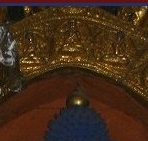 |
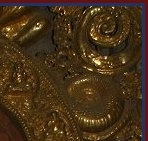 |
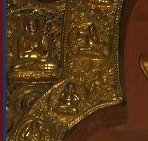 |
 |
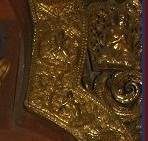 |
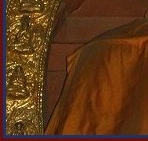 |
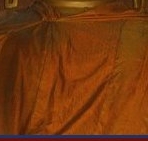 |
 |
 |
 |
 |
 |
 |
 |
 |
 |
 |
Detailed Itinerary: (What you will see and do)Day 1 - After early morning drive of about an hour we stop at Dhulikhel for breakfast. Dhulikhel is a vantage point to get a fine mountain view. From Dhulikhel the road drops down to join the River Sun Koshi and turns north up along the River Bhote Koshi. After passing Tatopani - "Natural Hot Spring" and after the immigration and customs formalities, we cross the Friendship Bridge and drive 8 kms. uphill to Zhangmu (popularly known as Khasa). Zhangmu is the major trading post between Nepal and Tibet and this small town has a bank and post office. From there we proceed towards Nyalamu passing the River Bhote Koshi gorge with spectacular waterfalls and rhododendron forest. Nyalamu is known as Kuti in Nepal and it had been a trade post at one time. Overnight at Guesthouse.
Day 2 - Once the jeeps and truck are loaded we start our drive to Paigutso, a beautiful lake, through rugged alpine country. By crossing the Thongla Pass at 4970m. we traverse through the greatest mountain range on earth to the Trans Himalayan mountain desert of the Tibetan Plateau. From the high pass we leave the Kathmandu - Lhasa Highway and turn left - off below Lalung La Pass, north of the Himalayan ranges and move westwards following the Nakdo-Chu tributary of the Men-Chu(itself a source of the Bum-Chu) up stream. The road passes through the desolate plain of Digur Tang with its enormous sand dunes and the snow capped peaks of Shishapangma (8012m.) and Langtang (7232m.) in close proximity to the south. Leaving the Bum- Chu basin we descend towards Pelkhu Tso (4600m.) a stunningly beautiful lake into which the glacial streams of Da-Chu and Lha-Chu drain. Overnight at Camp.
Days 3 - We drive to Kyirong - "Valley of Pleasure". Saga county is the region occupied by the Upper Brahmaputra River and its tributaries : the Rukyok Tsangpo and Kyibuk Tsangpo. The town is strategically located at the intersection of these motor routes: the Lhartse Road from East, the Dzongkha Road from the South and Purang and Dzongkha Road from the West. The town of Saga (ironically meaning "Happy Land") occupies an are of 13374 sq. kms with a population of 11641. We cross the River Brahmaputra and camp near the small town of Saga. Overnight at Camp.
Day 4 - After early breakfast we leave the Tsangpo River Valley behind and climb through rocky mountainous regions. The high wide valleys are most beautiful. The drive takes us through a lake of pure white complexion. After 71 kms we cross Soge La Pass (4725m.) and descend 36 kms. to the small township of Gacho. Nomads pitch their tents here as there is a fine water supply nearby. From this point, healthy growing herds of Yaks and mountain goats are seen on both sides of the road. After a drive for 14 kms. from Gacho, we arrive at the settlement at Paryang. Since Paryang has little of interest, we continue our leaving this small township behind. Some 20 kms after Paryang, the road fords the Neu Tsangpo River at Horpa. This river eventually flows into the Brahmaputra below Paryang. The crossing is dangerous and vehicles are often trapped midstream. Once across, the road continues through sandy grassland. Here we set the camp for overnight stay.
Day 5 - IThis is a long drive through some of the most spectacular central Tibetan terrain. Cross many rivers and many beautiful salt lakes. The colors vary from aquamarine to turquoise, sapphire to cobalt blue. The lakes are rich in mineral salt. From Harpa the main road continues to follow the north bank of the Brahmaputra upstream to Satsam (50 kms.) and after crossing to the southern bank follows the course of the Mayum Tsangpo feeder river towards the Mayum la Pass that marks the frontier between West Tibet and Far-west Tibet. The distance from Satsam to the Pass is 50 kms. We cross Maryum La Pass and Nyogze Lake and continue our drive to Darchen. Nyogze is a huge lake with white colors and some refer to this lake as Hanuman Lake. Overnight at Guest House.
Day 6 - Sherpas will organize the camp, yak herders load their yaks and we start off for Parikrama (trekking round Mt. Kailash in a religious way). The trail follows along the western spur of the foothills before reaching a cairn of prayer stones where it turns north into the great western valley, about 1 km it reached Chorten Kang Nyi (two legged Stupa). A few hundred meters east of this is the Darpoche (Great Prayer Flagpole) which is taken down and redecorated on the full moon day of the Buddha's Enlightenment Festival (around April/May each year). There is a rock in the middle of this spot, which is associated with Mahakala, one of the main Buddhist Protectors. From here the valley begins to turn east and, as though gazing down from the heavens, directly above is the western face of Mt. Kailash, a triangular facet of rock dripping with great drops of overhanging snow. This is a face of the mountain rarely seen in photos, yet it has a power and beauty of its own. From this turn in the valley it is an another 2 hours at least before reaching Dirapuk. At this point the trek is not so easy and, if it is late afternoon or near sunset, each steps seems a race against time. Once Dirapuk is in sight it is important to keep to the trail. Do not be hasty. It actually passes your destination on the far side of the river. Unless you are prepared to remove shoes and socks and chance a wade through the river (which can be risky when the water is high). It is better to follow the trail down the opposite bank. Overnight at Camp.
Day 7 - This day is the climax of the pilgrimage. The Dolma La Pass (5650m.) lies 6.4 kms ahead and 765 m. above Dirapuk. Physically it is the most arduous day. After early breakfast set off as the sun's ray break over the ridges above. After the footbridge the trail rises up a rocky slope. Take this gently but steadily. It soon reached a level walk. The peak of Mt. Kailash rises to the right and can now be seen linked to a long spur which joins the Eastern ridge. This is the top edge of glacial valley from which the Lhachu (Divine River) flows. Follow the router to Dolma Pass via Shivasthal as the other route is not possible for the pilgrims. Keep Kailash on your right. The stretch of 4 miles between Dhira Puk to Dolma is very steep and extremely tiring and exciting. The climb is from 16400ft. to 18600ft. Be deliberately slow and use the walking stick. Stop rest and then proceed. Whenever you feel tired, stop rest and then regain your steps. After perhaps 15 minutes rest in Dolma La. We descend a steep, rock-strewn path to the valley below. Just below the pass is Lake Gauri which is the holiest lake. It is frozen most of the time. A final steep descending staircase brings you to the valley floor. From here it is still about 5 hours to the day's destination with no shelter in between. It is vitally important to remain on the right hand side of the river, the West Bank. If not you will be trapped, unable to cross it. The walk now becomes very pleasant and relaxing (as long as the weather is clear). Finally one reaches Zuthul Phuk - the cave of miracles. The Great ascetic Milerappa is supposed to have performed miracles here to defeat Naro Bonchung. The statue of this great Saint is here. Overnight at Camp.
Day 8 - End the Kailash Parikrama near Darcen and drive to Lake Manasarovar.
Day 9 - Manasarovar, at 14750 ft./4520m., is the highest body of fresh water in the world. The lake is full of fish and swans. The lake has turquoise complexion. Pilgrims conduct worship and take holy bath, as it purifies the soul. Water and pebbles are collected to take back home. It is the lake of compassion, tranquility and bliss. This is intimately connected with Kailash Parbat. It is in their combination creation comes forth. Overnight at Camp.
Day 10 - Drive Manasarovar to Paryang. Overnight at Camp.
Day 11 - Drive Paryang to Saga. Overnight at Camp.
Day 12 - Drive Saga to Paigutso Lake. Overnight at Camp
Day 13 - Drive Paigutso Lake to Nyalamu. Overnight at Camp.
Day 14 - Drive From Nyalamu to Zhangmu. After completing customs and immigration formalities, we drive back to KATHMANDU.

|
Home |
Trekking |
Mountain Flight |
Jungle Safari |
About Us
© 1996 - 2019 Go2Nepal.com. All Rights Reserved. Modified: 2019/02/19 15:20:00 - Webmaster: Jack B. Shatzer |